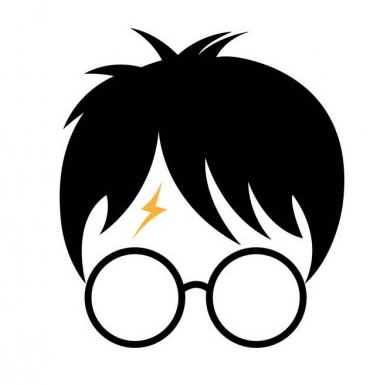Hogwarts Monthly News (Issue 13)
By Hazel Emory Antler
Welcome back, all readers, to another issue of Hogwarts Monthly News! Apologies for the long delay - I promise it won't happen again. Hidden inside the cover of this book are leprauchans, water balloons, feminism, candles, art, and so much more! So what are you waiting for? OPEN ME! (1 Copy = 3 sickles.)
Last Updated
April 26, 2025
Chapters
25
Reads
165
A Galaxy Of Gods
Chapter 12
The Roman Empire was said to have fallen around 1600 years ago… Yet, we continue to see its effects in our daily lives. Language, architecture, engineering, even our calendars—all of them derived from the Romans. And let’s not forget about another example: modern-day astronomy. The way we observe planets and stars has its basis in the Roman era, even if it's only the names we gave those celestial bodies.
Join me today as we explore planetary mythology and etymology, then take a look at astrology through the views of the Romans.
— ⋆⋅☾⋅⋆ —
The word planet goes back to the ancient Greek word planēt, meaning “wanderer.” It is derived from planasthai, a Greek verb which means “to wander.” This word was originally applied to any of the seven visible celestial bodies—those that appeared to move independently of the fixed stars. This includes the Sun, Moon, Mercury, Venus, Mars, Jupiter, and Saturn.
The Romans knew of these seven core celestial bodies, as they were visible to the naked eye. Ancient astronomers named each one of them, excluding Earth, after Roman gods and goddesses.
There were originally two sun (sol) gods: Helios, the sun god, and Apollo, the god of light and justice. While the two were originally distinct, they later turned into two aspects of the same deity. Apollo was often conflated with Helios, but while he was the god of the sun, Apollo was seen as his counterpart.
It’s similar for the moon (luna) as well. While Selene is known to be the goddess of the moon in Greek mythology, in Roman mythology, it’s Diana. Initially, she was the goddess of hunting, but later, she was also considered the goddess of the moon and chastity. To specify, Diana represents Earth’s Moon, but there are hundreds of other moons, such as Titan, that have Roman roots.
Mercury is the god of commerce, travel and thievery in Roman mythology, known for being a messenger to the gods, but also for his speed. The planet Mercury reflects this trait as it orbits the sun relatively quickly compared to other planets.
Venus was named after the Roman goddess of love and beauty, whose Greek counterpart you may know as Aphrodite. The planet is aptly named since it makes a beautiful sight in the sky, being the brightest in our solar system after the Sun and Moon.
The planet Mars is named after the Roman god of war. This planet’s reddish-brown colour is reminiscent of blood, which is what associates Mars with this planet.
Largest in our solar system, Jupiter was based on the King of the Gods in Roman mythology, which gives him a very fitting name. This planet is considered to be the royal planet and ruler of the zodiacal mansion of Sagittarius.
Saturn, the Roman god of agriculture, wealth, and time, is the last of the seven. The planet Saturn is the slowest in our orbit around the sun, which is perhaps how the god of time is connected to it.
— ⋆⋅☾⋅⋆ —
As I’m guessing you know by now, the Romans had a keen interest in astronomy. The one thing they may have liked even more was astrology. By studying the movements of celestial bodies, the Romans believed they would have a deeper understanding of the cosmos, deities, and self.
More specifically, the Romans thought that the position of the celestial bodies could influence human affairs and reveal the will of the gods. Astrology became deeply integrated into their society and culture, shaping personal beliefs, political decisions, and religious practices.
The twelve zodiac signs played a key role in Roman astrology, with each sign believed to shape a person's personality and destiny. Astrologers would create birth charts to predict an individual’s future. It was also the same when it came to religious astrology, as it linked celestial movement to divine messages, with events like comets being interpreted as omens. Festivals such as Saturnalia were aligned with astrological signs, creating a connection between the heavens and common people.
Astrology also came into play with politics and military strategy. Emperors and generals consulted astrologers before major campaigns, believing that planetary alignments could determine success or failure.
Take Thrasyllus, for example. Thrasyllus of Mendes, born in Egypt, was the personal astrologist of Emperor Tiberius. He predicted that Tiberius would become the new emperor, and it happened. After that, Tiberius kept him close to make sure he knew what the stars (or the gods) had in store for him.
There were many other famous astrologers from that time as well, such as Manilius or Ptolemy. However, in the modern world, belief in astrology has slowly become discredited within the scientific community. Nonetheless, it is still observed by millions today!
— ⋆⋅☾⋅⋆ —
Hopefully, this topic gained your interest and gave you some insight into the fascinating connection between the Romans and astrology. It’s clear to me that the stars played a significant role in their world, and whether you believe it or not, the impact is undeniable. Anyway, I’ll leave you here. Thank you for reading, and bye for now!
Written by Daphne Clarke.
Edited by Hazel Antler.
Proofread by Daphne Clarke.



